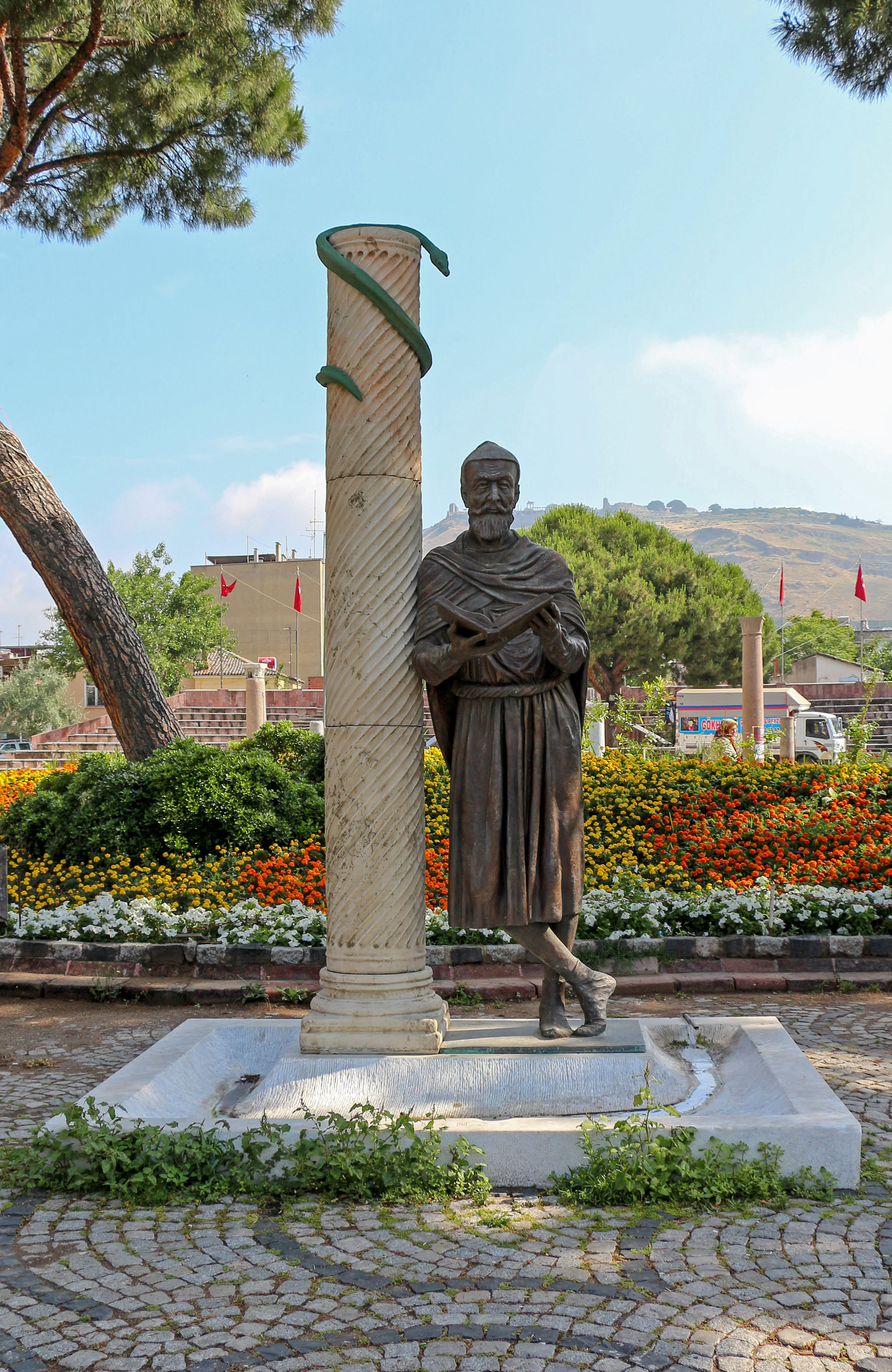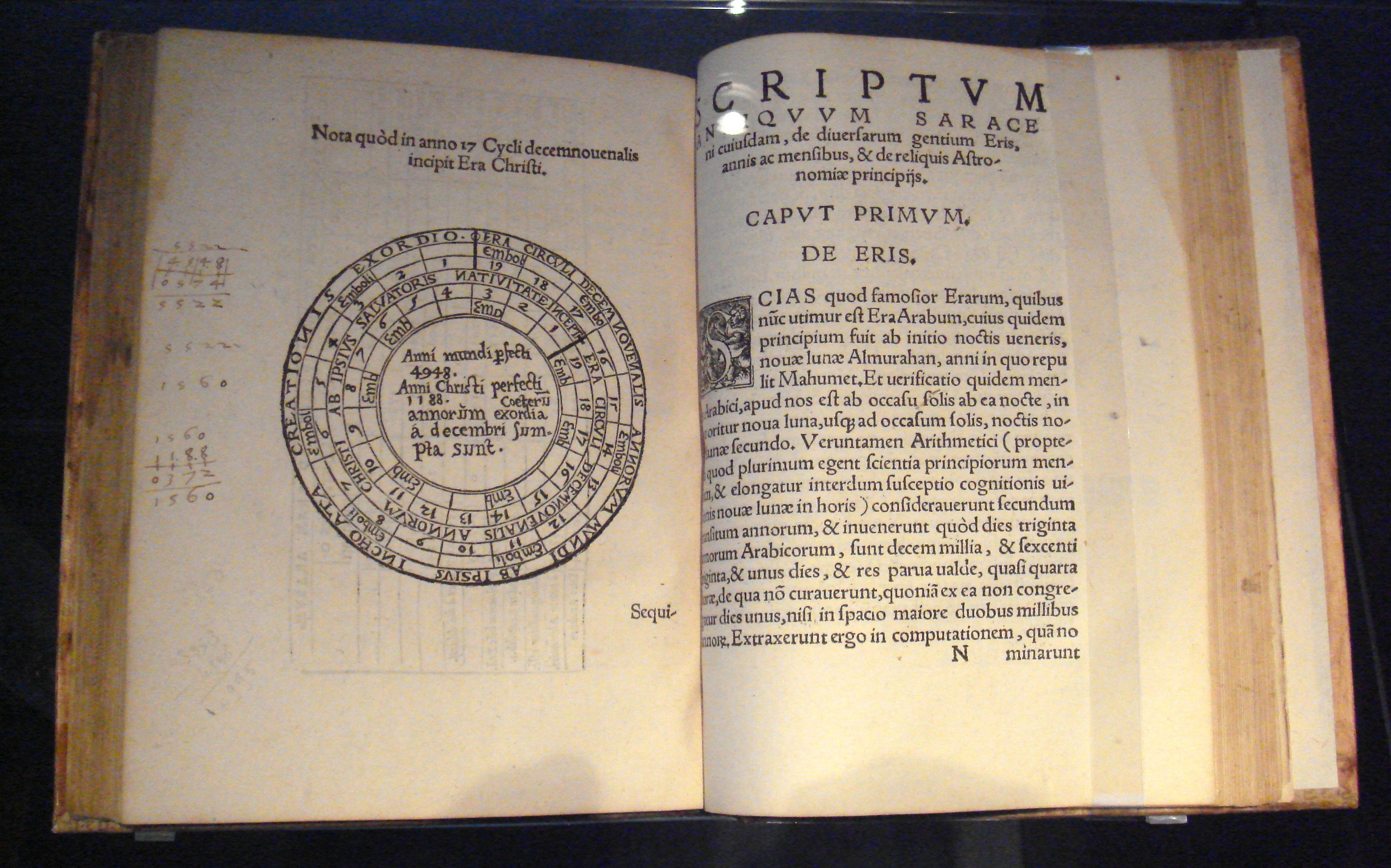|
Kitāb Al-nawāmīs
The ''Kitāb al-nawāmīs'' is an Arabic book of magic written in the late ninth century in a Sabians, Ṣābian milieu. It Pseudo-Platonica, falsely claims to be a work of Plato. The complete Arabic text does not survive, but a complete Latin translation of the twelfth century does, going under the title ''Liber vaccae'' or the ''Book of the Cow''. The work is divided into two books of 45 and 40 chapters, respectively. Each chapter contains a magical experiment or recipe, including for creating rational animals or hybrids, creating phenomena in the sky, controlling the rain or trees, acquiring wisdom, influencing the sense of vision, creating inextinguishable lights, getting one's wishes granted, seeing spirits, making animals submissive, manipulating fire and making miraculous seeds and inks. Title The original title in Arabic, ''Kitāb al-nawāmīs'', is often translated ''Book of the Laws'', since ''nawāmīs'' is the plural of ''nāmūs'', an Arabic transliteration of Ancie ... [...More Info...] [...Related Items...] OR: [Wikipedia] [Google] [Baidu] |
Galen
Aelius Galenus or Claudius Galenus (; September 129 – AD), often Anglicization, anglicized as Galen () or Galen of Pergamon, was a Ancient Rome, Roman and Greeks, Greek physician, surgeon, and Philosophy, philosopher. Considered to be one of the most accomplished of all medical researchers of Ancient history, antiquity, Galen influenced the development of various scientific disciplines, including anatomy, physiology, pathology, pharmacology, and neurology, as well as philosophy and logic. The son of Aelius Nicon, a wealthy Greek architect with scholarly interests, Galen received a comprehensive education that prepared him for a successful career as a physician and philosopher. Born in the ancient city of Pergamon (present-day Bergama, Turkey), Galen traveled extensively, exposing himself to a wide variety of medical theories and discoveries before settling in Ancient Rome, Rome, where he served prominent members of Roman society and eventually was given the position of perso ... [...More Info...] [...Related Items...] OR: [Wikipedia] [Google] [Baidu] |
Bavarian State Library
The Bavarian State Library (, abbreviated BSB, called ''Bibliotheca Regia Monacensis'' before 1919) in Munich is the central " Landesbibliothek", i. e. the state library of the Free State of Bavaria, the biggest universal and research library in Germany and one of Europe's most important universal libraries. With its collections currently comprising around 10.89 million books (as of 2019), it ranks among the leading research libraries worldwide. The furthermore is Europe's second-largest journals library (after the British Library). Furthermore, its historical holdings encompass one of the most important manuscript collections of the world, the largest collection of incunabula worldwide, as well as numerous further important special collections. Its collection of historical prints before 1850 totals almost one million units. The legal deposit law, still applicable today, has been in force since 1663 and requires that two copies of every printed work published in Bavaria ... [...More Info...] [...Related Items...] OR: [Wikipedia] [Google] [Baidu] |
Richard Of Fournival
Richard de Fournival or Richart de Fornival (1201 – ?1260) was a medieval philosopher and trouvère perhaps best known for the '' Bestiaire d'amour'' ("The Bestiary of Love"). Life Richard de Fournival was born in Amiens on October 10, 1201. He was the son of Roger de Fournival (a personal physician to King Philip Augustus) and Élisabeth de la Pierre. He was also half-brother of (1236–46). Richard was successively canon, deacon, and chancellor of the cathedral chapter of Notre Dame d'Amiens. He was also a licensed surgeon, by the authority of Pope Gregory IX and this privilege was confirmed a second time in 1246 by Pope Innocent IV. He died on March 1, either 1260 or 1259. Richard's library (of which the ''Biblionomia'' must be in part a catalogue) passed to Gérard d'Abbeville, an archdeacon at Amiens, who then left many of them to the recently established Collège de Sorbonne. Some of these volumes then passed to the Royal Library (now the Bibliothèque nationale de France ... [...More Info...] [...Related Items...] OR: [Wikipedia] [Google] [Baidu] |
Latin Translations Of The 12th Century
Latin translations of the 12th century were spurred by a major search by European scholars for new learning unavailable in western Europe Renaissance of the 12th century, at the time; their search led them to areas of southern Europe, particularly in Taifa of Toledo, central Spain and Sicily#Arab period (827–1091), Sicily, which recently had come under Christian rule following their reconquest in the late 11th century. These areas had been under Muslim rule for a considerable time, and still had substantial Arabic-speaking populations to support their search. The combination of this accumulated knowledge and the substantial numbers of Arabic-speaking scholars there made these areas intellectually attractive, as well as culturally and politically accessible to Latin scholars. A typical story is that of Gerard of Cremona (c. 1114–87), who is said to have made his way to Toledo, well after its reconquest by Christians in 1085, because he: Many Christian theologians were highly ... [...More Info...] [...Related Items...] OR: [Wikipedia] [Google] [Baidu] |
Paul Kraus (Arabist)
Eliezer Paul Kraus, 11 December 1904 – 10 or 12 October 1944, was a Jewish Arabist born in Prague. He is the author of a number of seminal works on early Arabic philosophy, with a special focus on Arabic alchemy and chemistry. Some of his writings on this subject are still standard reference works in the field today. Having been educated in Prague and Berlin (where he studied under Julius Ruska), the rise of the Nazis in 1930s Germany forced him to move first to Paris and later to Cairo, where he died in 1944. He allegedly committed suicide or, according to family claims, was politically assassinated.Leo Strauss and the Politics of Exile: The Making of a Political Philosopher Eugene Sheppard, Brandeis University Press (Google Books)S ... [...More Info...] [...Related Items...] OR: [Wikipedia] [Google] [Baidu] |
Bibliothèque Nationale De France
The (; BnF) is the national library of France, located in Paris on two main sites, ''Richelieu'' and ''François-Mitterrand''. It is the national repository of all that is published in France. Some of its extensive collections, including books and manuscripts but also precious objects and artworks, are on display at the BnF Museum (formerly known as the ) on the Richelieu site. The National Library of France is a public establishment under the supervision of the Ministry of Culture. Its mission is to constitute collections, especially the copies of works published in France that must, by law, be deposited there, conserve them, and make them available to the public. It produces a reference catalogue, cooperates with other national and international establishments, as well as participates in research programs. History The National Library of France traces its origin to the royal library founded at the Louvre Palace by Charles V in 1368. Charles had received a collection o ... [...More Info...] [...Related Items...] OR: [Wikipedia] [Google] [Baidu] |
Abū Al-Qāsim Al-ʿIrāqī
Abu al-Qasim Ahmad ibn Muhammad al-Iraqi al-Simawi (died 1260?) was a Muslim alchemist from Baghdad who performed various experiments and wrote the ''Kitāb al-ʿIlm al-muktasab fī zirāʿat al-dhahab'' ("The Book of Acquired Knowledge concerning the Cultivation of Gold"). Al-Jildaki Ali bin Mahammad Aydamir or ʿIzz al-Dīn al-Jildakī (Egyptian Arabic: عز الدين الجلدكي; Coptic: Ⲉⲍ ⲉⲗⲇⲓⲛ ⲉⲗϫⲗⲇⲕⲓ), also written al-Jaldakī (d. 1342 CE / 743 AH) was an Egyptian alchemist from the 14th ... was deeply inspired by his works and wrote various commentaries and references regarding the works of Al-Simawi. References Alchemists of the medieval Islamic world {{Iraq-scientist-stub ... [...More Info...] [...Related Items...] OR: [Wikipedia] [Google] [Baidu] |
Ghāyat Al-ḥakīm
''Picatrix'' is the Latin name used today for a 400-page book of magic and astrology originally written in Arabic under the title ''Ghāyat al-Ḥakīm'' (), or ''Ghayat al-hakim wa-ahaqq al-natijatayn bi-altaqdim'' which most scholars assume was originally written in the middle of the 11th century, though an argument for composition in the first half of the 10th century has been made. The Arabic title translates as ''The Aim of the Sage'' or ''The Goal of The Wise''. The Arabic work was translated into Spanish and then into Latin during the 13th century, at which time it got the Latin title ''Picatrix''. The book's title ''Picatrix'' is also sometimes used to refer to the book's author. ''Picatrix'' is a composite work that synthesizes older works on magic and astrology. One of the most influential interpretations suggests it is to be regarded as a "handbook of talismanic magic". Another researcher summarizes it as "the most thorough exposition of celestial magic in Arabic", indi ... [...More Info...] [...Related Items...] OR: [Wikipedia] [Google] [Baidu] |
Worship Of Heavenly Bodies
The worship of heavenly bodies is the veneration of stars (individually or together as the night sky), the planets, or other astronomical objects as deities, or the association of deities with heavenly bodies. In anthropological literature these systems of practice may be referred to as astral cults. The most notable instances of this are Sun gods and Moon gods in polytheistic systems worldwide. Also notable are the associations of the planets with deities in Sumerian religion, and hence in Babylonian and Greco-Roman religion, viz. Mercury, Venus, Mars, Jupiter, and Saturn. Gods, goddesses, and demons may also be considered personifications of astronomical phenomena such as lunar eclipses, planetary alignments, and apparent interactions of planetary bodies with stars. The Sabians of Harran, a poorly understood pagan religion that existed in Harran during the early Islamic period (7th–10th century), were known for their astral cult. The related term astrolatry usually imp ... [...More Info...] [...Related Items...] OR: [Wikipedia] [Google] [Baidu] |
Vatican City, Biblioteca Apostolica Vaticana, MS Pal
Vatican may refer to: Geography * Vatican City, an independent city-state surrounded by Rome, Italy * Vatican Hill, in Rome, namesake of Vatican City * Ager Vaticanus, an alluvial plain in Rome * Vatican, an unincorporated community in the US state of Louisiana Institutions * The Holy See, metonymically called as The Vatican, the governing body of the worldwide Roman Catholic Church and city-state of Vatican City * Roman Curia, the administrative apparatus of the Holy See * Vatican Apostolic Archive * Vatican Library * Vatican Publishing House Buildings * Vatican Basilica, better known as St. Peter's Basilica * Vatican Museums * Vatican Palace, better known as Apostolic Palace The Apostolic Palace is the official residence of the Pope, the head of the Catholic Church, located in Vatican City. It is also known as the Papal Palace, the Palace of the Vatican and the Vatican Palace. The Vatican itself refers to the build ... Other uses * ''The Vatican'' (mixtape), by ... [...More Info...] [...Related Items...] OR: [Wikipedia] [Google] [Baidu] |




